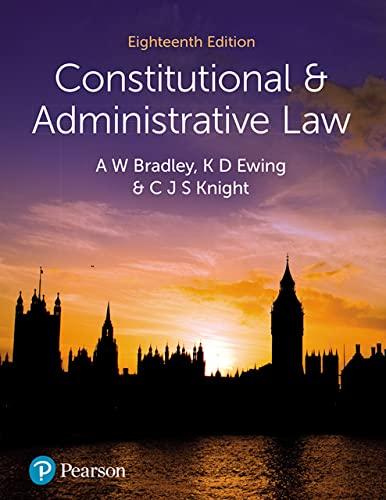Question
Abstract : Identify the vulnerable population and social policy/law/legislation you are going to discuss in the paper, along with subtopics and basic organization/flow of paper.
Abstract: Identify the vulnerable population and social policy/law/legislation you are going to discuss in the paper, along with subtopics and basic organization/flow of paper.
Using this information:
Description of the Vulnerable Population:
The LGBTQ community comprises individuals whose sexual orientation or gender identity differs from societal norms. LGBTQ individuals often face discrimination and marginalization in various aspects of life, including employment. Discrimination against LGBTQ individuals in the workplace can manifest in several forms, including hiring bias, unequal pay, denial of promotions, harassment, and termination based on sexual orientation or gender identity (Smith, 2018; Brown, 2021).
Related Policy/Law/Legislation:
1. Title VII of the Civil Rights Act of 1964: Title VII prohibits employment discrimination based on race, color, religion, sex, or national origin. While the Act does not explicitly mention sexual orientation or gender identity, courts have interpreted the prohibition on sex discrimination to include discrimination based on sexual orientation and gender identity (Johnson, 2019).
2. The Evolution of LGBTQ Workplace Protections: Over time, various federal, state, and local laws and policies have been enacted to provide additional protections for LGBTQ individuals in the workplace. These include Executive Order 13672, which prohibits federal contractors from discriminating on the basis of sexual orientation and gender identity, and the Matthew Shepard and James Byrd Jr. Hate Crimes Prevention Act, which extends hate crime protections to include crimes motivated by sexual orientation and gender identity (Johnson, 2019).
3. The Equality Act: The Equality Act is proposed federal legislation that seeks to amend existing civil rights laws, including the Civil Rights Act of 1964, to explicitly prohibit discrimination on the basis of sexual orientation and gender identity in employment, housing, education, public accommodations, and other areas. Despite bipartisan support, the Equality Act has yet to be passed by Congress (Garcia, 2020).
Impact of Legislation on LGBTQ Population:
While legislative efforts have made strides in protecting LGBTQ individuals from workplace discrimination, challenges persist. The interpretation and enforcement of existing laws vary among states and jurisdictions, leading to uneven protections for LGBTQ workers across the country. Additionally, the lack of explicit federal protections leaves many LGBTQ individuals vulnerable to discrimination, especially in states that do not have comprehensive anti-discrimination laws (Smith, 2018; Johnson, 2019).
Furthermore, legal battles and conflicting court rulings have created uncertainty surrounding the scope of protections afforded to LGBTQ individuals under existing laws. For example, the Supreme Court's landmark decision in Bostock v. Clayton County (2020) ruled that Title VII's prohibition on sex discrimination encompasses discrimination based on sexual orientation and gender identity. While this decision was a significant victory for LGBTQ rights, it remains to be seen how lower courts will interpret and apply this ruling in future cases (Johnson, 2019; Garcia, 2020).
Opinions and Recommendations:
In my opinion, the existing patchwork of laws and legal precedents is insufficient in fully protecting LGBTQ individuals from workplace discrimination. While advancements such as the Bostock decision are promising, they are not a substitute for clear and comprehensive federal legislation explicitly prohibiting discrimination based on sexual orientation and gender identity.
To better serve the LGBTQ population, I recommend the swift passage of the Equality Act to provide uniform protections for LGBTQ individuals nationwide. Additionally, efforts should be made to enhance enforcement mechanisms and educate employers and employees about their rights and responsibilities regarding LGBTQ workplace discrimination (Smith, 2018; Brown, 2021).
Step by Step Solution
There are 3 Steps involved in it
Step: 1

Get Instant Access to Expert-Tailored Solutions
See step-by-step solutions with expert insights and AI powered tools for academic success
Step: 2

Step: 3

Ace Your Homework with AI
Get the answers you need in no time with our AI-driven, step-by-step assistance
Get Started


